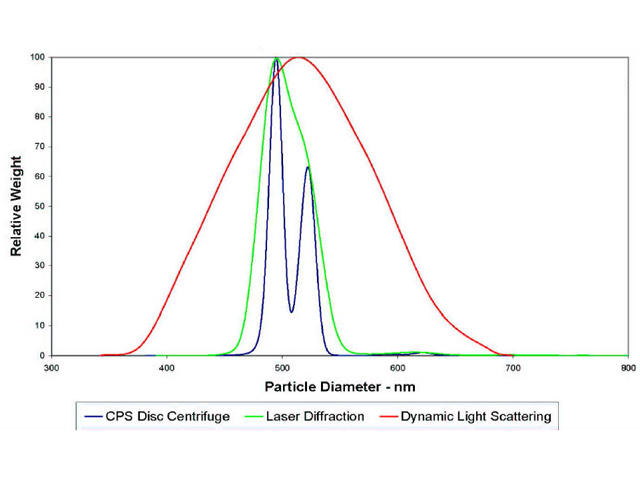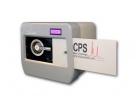Particle size is one of the most important pieces of information for understanding the behaviour of different types of materials. An ideal solution for measuring particle size distributions with high resolution is to use sedimentation in the centrifugal field of an ultracentrifuge
High-resolution particle size analysis
All particle size distribution measurement methods (gravity field sedimentation, differential sedimentation in a centrifugal field, laser diffraction, microscopic image analysis, etc.) can be characterised by three parameters: resolution, accuracy and repeatability. Intuitively, resolution is very well understood as the ability of a given method to see the size distribution clearly. However, to be able to determine resolution objectively, we must first have a clear definition of it.
In the case of particle size analyzers, resolution is by default the minimum difference between two very narrow fractions of the particle number at which the value of the overlap of the corresponding peaks is less than 5%. Alternatively, for a single fraction of uniform particles, the resolution is introduced by the median size D50 (resolution = 100 x (D95 - D5)/D50). Both of these definitions lead to the same result.
When assessing the available instruments in terms of achievable resolution, the so-called disk centrifuges take the lead, using the differential sedimentation method in a centrifugal field, which allows them to measure with a resolution of ~2%.
Disc centrifuges
Disc centrifuges are particle size analysers that use the differential sedimentation method in a centrifugal field, which allows them to measure much smaller particles than conventional gravity field sedimentation. Here, the settling velocity is proportional to the square of the particle size (i.e. a 1 µm particle will settle 4 times faster than a 0.5 µm particle).
The analysis process can be described in several points:
- The chamber of the rotating disk is partially filled with a liquid with a slight density gradient, which contributes to the stability of the sedimentation process.
- The diluted sample is injected into the centre of the centrifuge and the injected particles first form a very thin band on the surface of the liquid and then start to sediment very rapidly in the radial direction.
- At a certain distance from the axis of rotation, a monochromatic light beam passes through the chamber, the intensity of which is detected after passage.
- The desired particle size distribution is determined from the measured sedimentation time and the detected intensity profile by calculations based on a combination of Stokes' law for centrifugal fields and Mie theory.
The theoretical value of the disc centrifuge resolution depends on three factors: the width of the light beam used (W), the thickness of the band formed on the liquid surface at the start of the analysis (T) and the sedimentation depth (H) - see equation in the figure below.
For H=20 mm (the maximum practicable depth of sedimentation), T=0.033 mm (the thickness of the band corresponding to a 0.05 ml sample) and W=0.5 mm (a typical value for the width of the beam), this gives a resolution of 1.4 %. That is, the instrument should be able to resolve particles whose size difference is only 1.4%. The actual resolution of the instrument is always slightly worse than the theoretical value. There are three main factors that can reduce the resolution - Brownian motion of the particles during sedimentation, instability of the sedimentation process (streaming) and the broader thickness of the sample on the liquid surface.
These factors are discussed in detail in the reference below. The actual resolution is thus close to ~2%.
Report Source: Ultra-high resolution particle size analysis with the CPS disc centrifuge https://lot-qd.de






